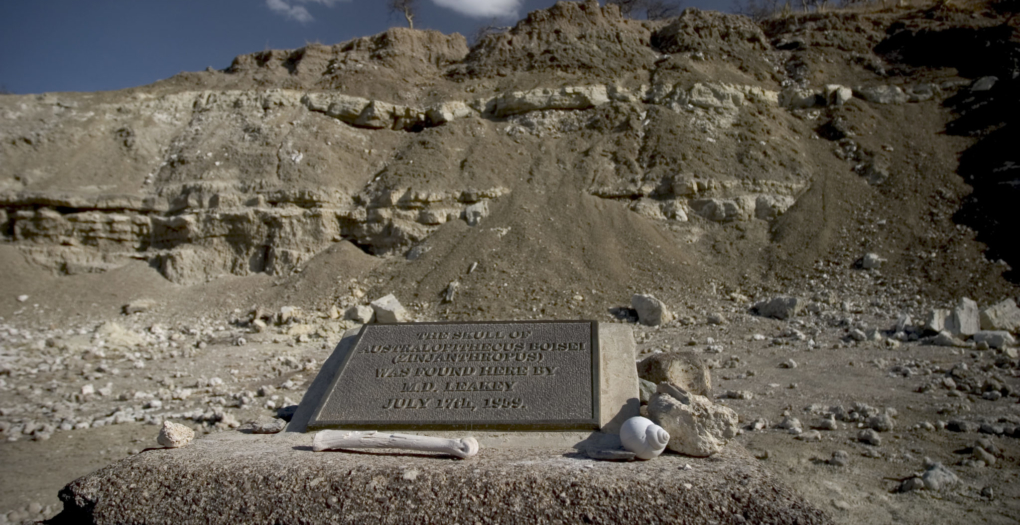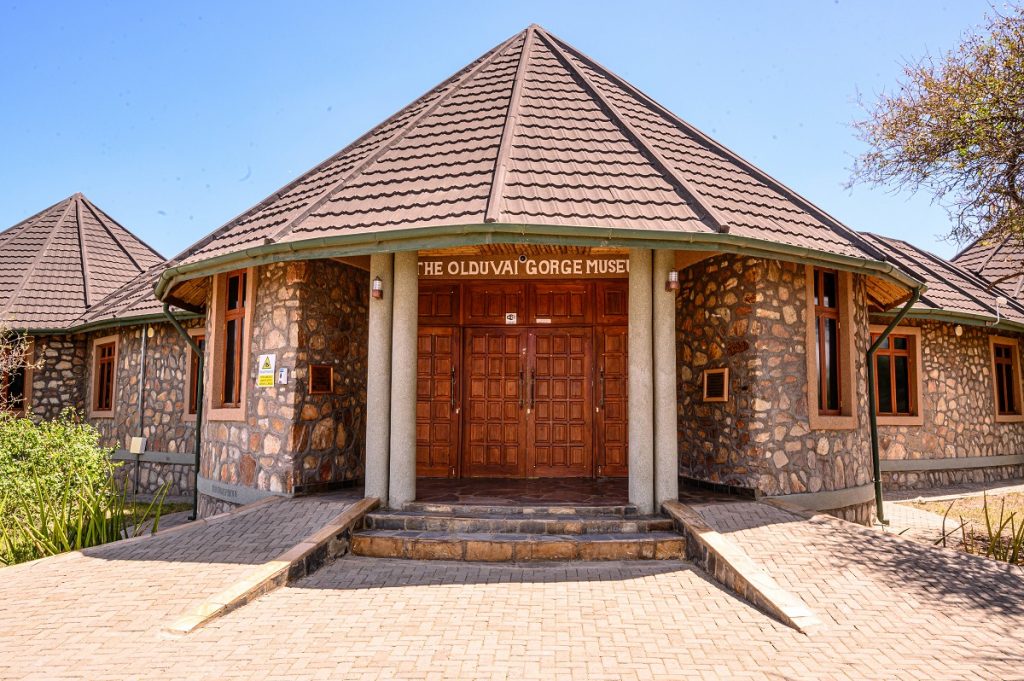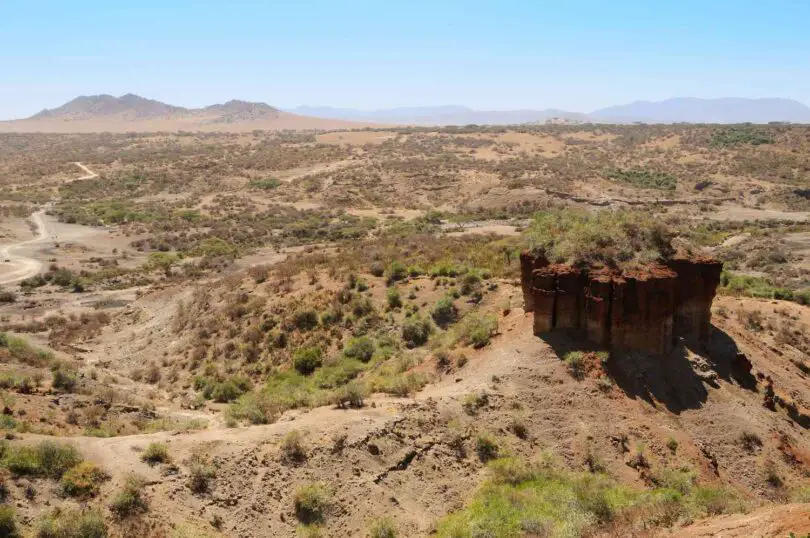Olduvai Gorge or more correctly as the Maasai that named it call it, Oldupai Gorge is one of the most important paleoanthropological sites in the world. This location, a deep gorge in the Rift Valley, is home to invaluable history in furthering the understanding of early human evolution.
The gorge, the only way to describe it is Mother Earth opening up to show us the secrets of her past. This steep-sided ravine is about 48 km long, and is located in the eastern Serengeti Plains within the Ngorongoro Conservation Area in Ngorongoro District of Arusha Region. It is christened the Garden of Eden because this is where the oldest human fossils have been found. The site is registered as one of the National Historic Sites of Tanzania and to date remains the true cradle of mankind.
Who Found Fossil Remains in Olduvai Gorge?

Olduvai Gorge. Photo/Piper & Health Travel
The site was discovered by the British/Kenyan archaeologists couple of Mary and Dr. Louis Leakey. The gorge is named after the Maasai word oldupai which means “the place of the wild sisal” or more famously, the East African wild sisal. Scientists explain that the gorge was formed from erosion cutting into the sediments of a Pleistocene lake bed rich in fossils and early hominin sites. Periodic flows of volcanic ash from nearby mounds helped to ensure the preservation of the fossils in the gorge.
“The locality is significant in showing the increasing developmental and social complexities in the earliest Hominina,” explains Marshall Fiona in her research work titled Life in Olduvai Gorge. Here is where we can see early man produce and use stone tools, she notes.
“Prior to tools, evidence of scavenging and hunting can be found all over…like in the gnaw marks that predate cut marks and of the ratio of meat versus plant material in the early hominin diet,” details the expert.
It is interesting to know that this is also the site of early social interaction and communal activity evident in the collecting of tools and animal remains in a centralized area.
“All these factors indicate an increase in cognitive capacities at the beginning of the period of hominids transitioning to homininina, that is, to a human clade,” she details.
How Old Was the Skull Found in Olduvai Gorge?
So just how old are the oldest fossils in Olduvai Gorge? The oldest Homo habilis fossils, probably the first early human species here, are said to be from approximately 1.9 million years ago (mya) and then come the Homo erectus’ fossils at the site date 1.2 mya. As for our most immediate ancestor, the Homo sapiens, these are estimated to date back 17,000 years ago as the main inhabitants of the site.
Visiting Olduvai Gorge
In 2019, the Olduvai Gorge Monument was erected near the entrance of the Olduvai Gorge. The monument is right by the roadside on your way to Ngorongoro Conservation Area and/or the Serengeti National Park. The monument serves to commemorate this significant site and is also a signpost to the actual site that has now become a major attraction. Life-size fossil casts were provided from original fossils collected at the site and these were used to create the two large concrete skulls that can be found at the monument set atop a large pedestal with an informative plaque mounted on the side. The fossil skulls represent the Paranthropus boisei and Homo habilis, two contemporary species that were first discovered at Olduvai Gorge. Each stands 6 feet tall and weighs almost 5,000 pounds.

Olduvai Gorge Museum. Photo/Ngorongoro conservation area authority
As for the Olduvai Gorge Museum, this must-visit site is located just 5 km beyond the monument and strategically situated right on the rim of the gorge. You get a chance to explore the different sections of the museum and learn about the various fossils to be found here. There is even a replica of the famous Laetoli Footprints, which provide some of the earliest evidence of bipedalism.
You will also get to learn about the prehistoric mammals that lived in the area. Not that there is a time limit but it takes just about an hour to explore the museum and for a small tip, you can even get to drive down into the gorge itself and visit the sites where Mary and Louis Leakey discovered the early hominin remains. If you are into it, it is even possible to visit active dig sites, because Olduvai Gorge remains the focus of many ongoing studies to date.
When you are all done at the museum, you can marvel at another phenomenon of the Cradle of Mankind, a shifting sand dune. The dune is formed from volcanic ash and is said to be highly magnetic due to its high iron. It is this iron content and magnetism that scientists say causes the dune to ‘cling together.’ The dune acts as a single unit and slowly moves across the landscape over, around 10 meters a year, as it is blown by the prevailing wind.









